Abstract
Data from 3,087 persons age 45 or older in the National Health and Nutrition Survey, 1971-74, showed that subjects with lens opacifying disease had an increased odds for age-related macular degeneration (AMD) compared to those who had no lens opacities. The crude odds ratio for aphakic patients was 4.6 (95% CI = 2.5, 8.6). The association remained after controlling for age, sex, and systolic blood pressure (a common risk factor) in a logistic regression model. These data are consistent with the hypothesis that light-induced damage may contribute to both lens and retinal disease and suggest that cataract extraction without implantation of ultra-violet/blue light absorbing intraocular lens may place subjects at increased risk of AMD.
Full text
PDF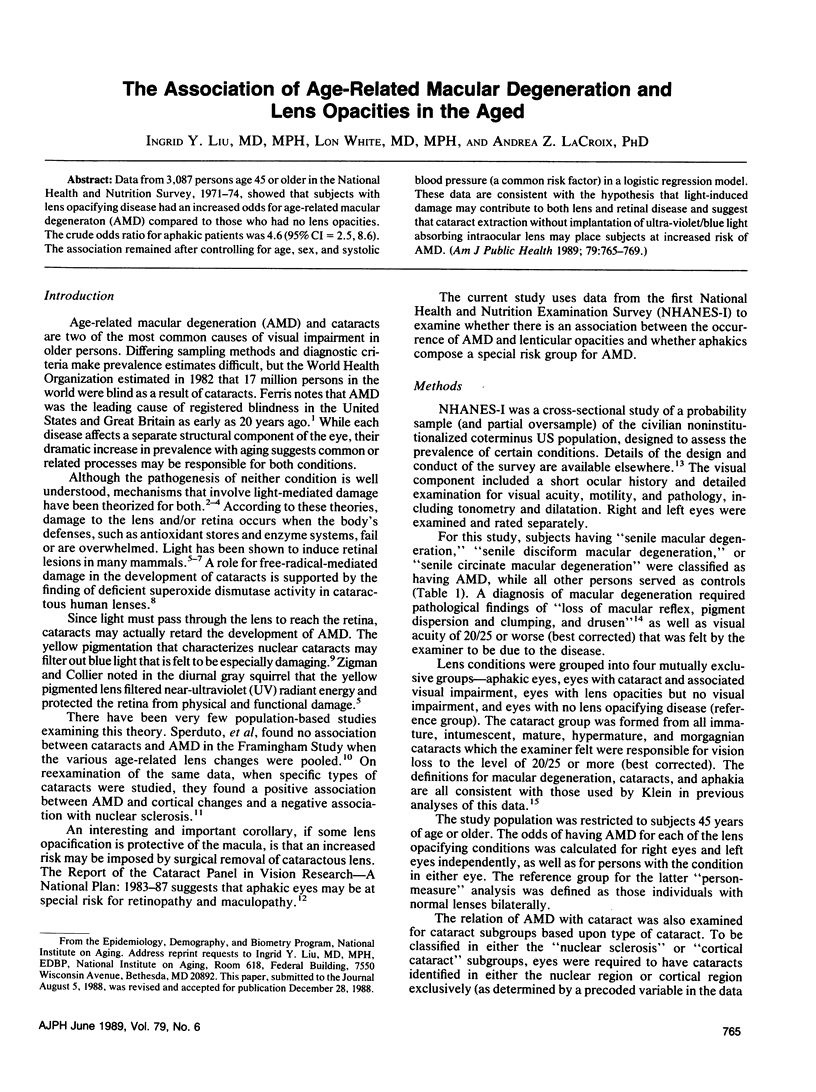
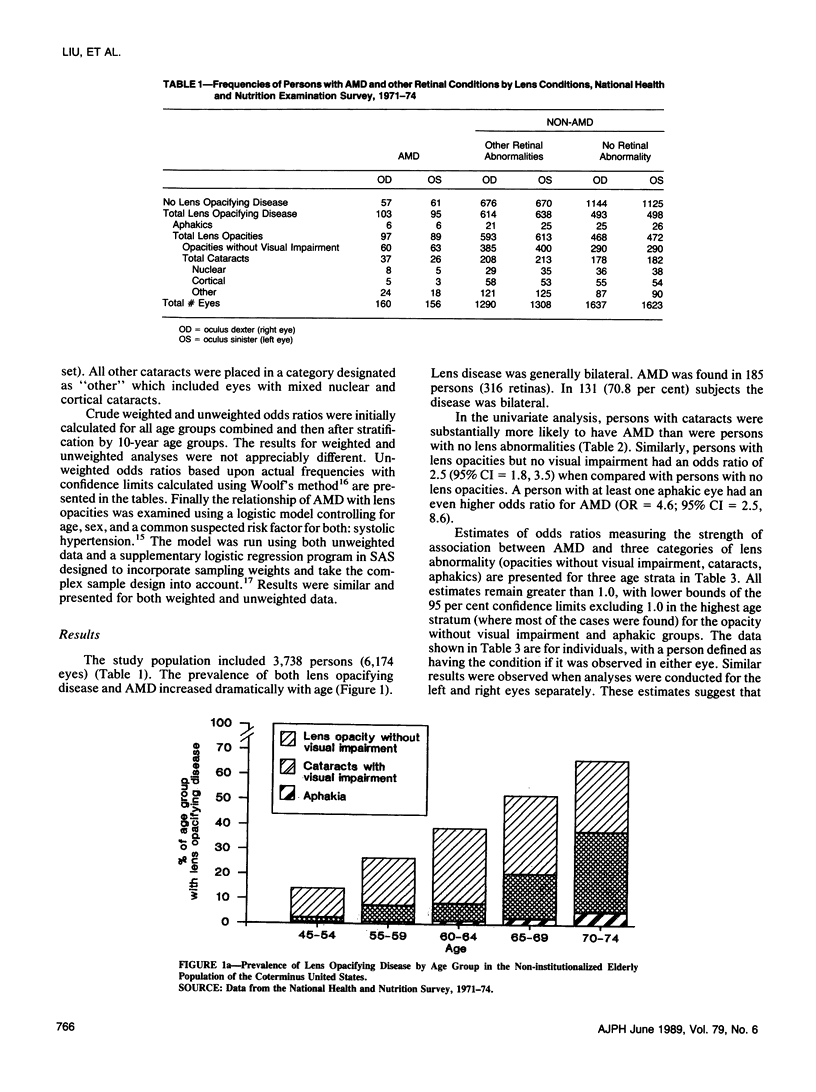
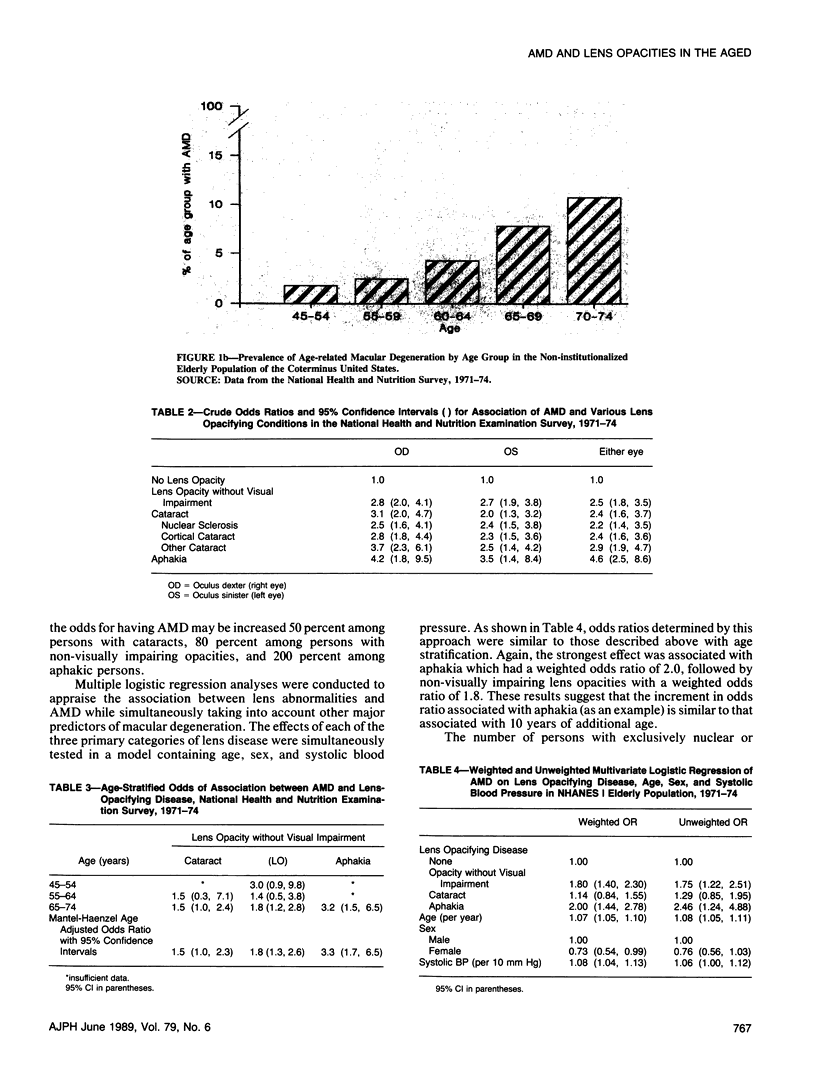
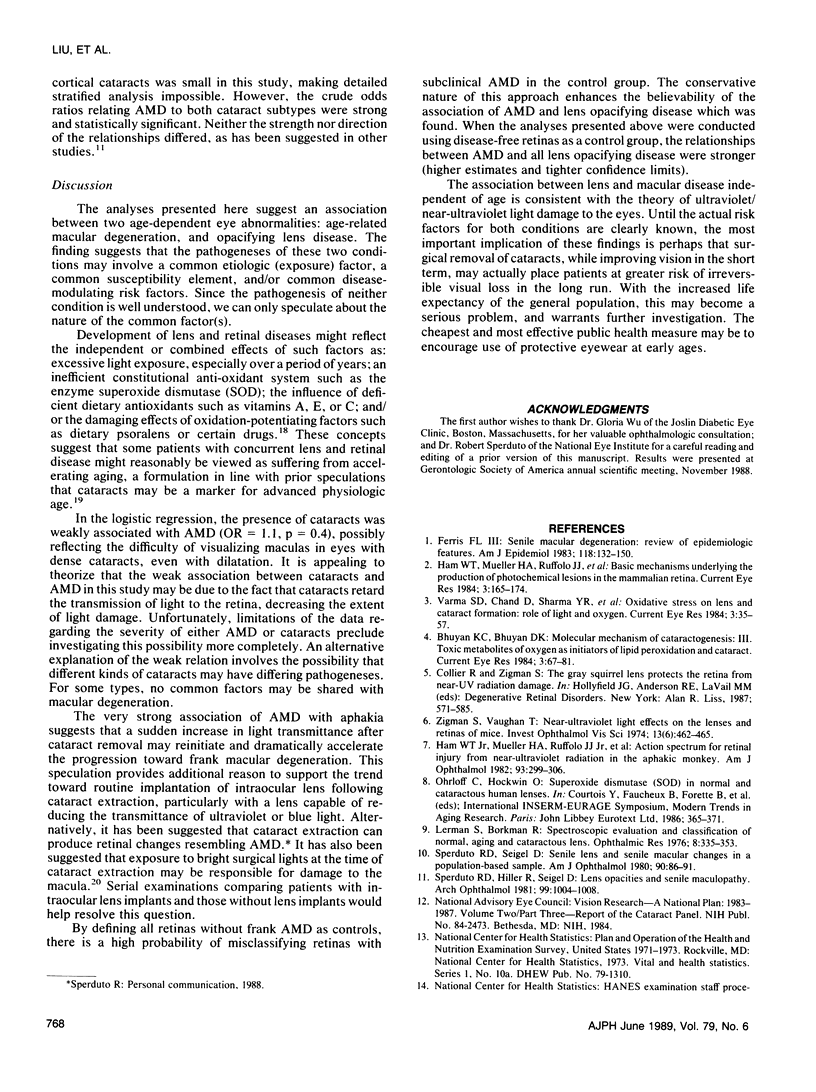
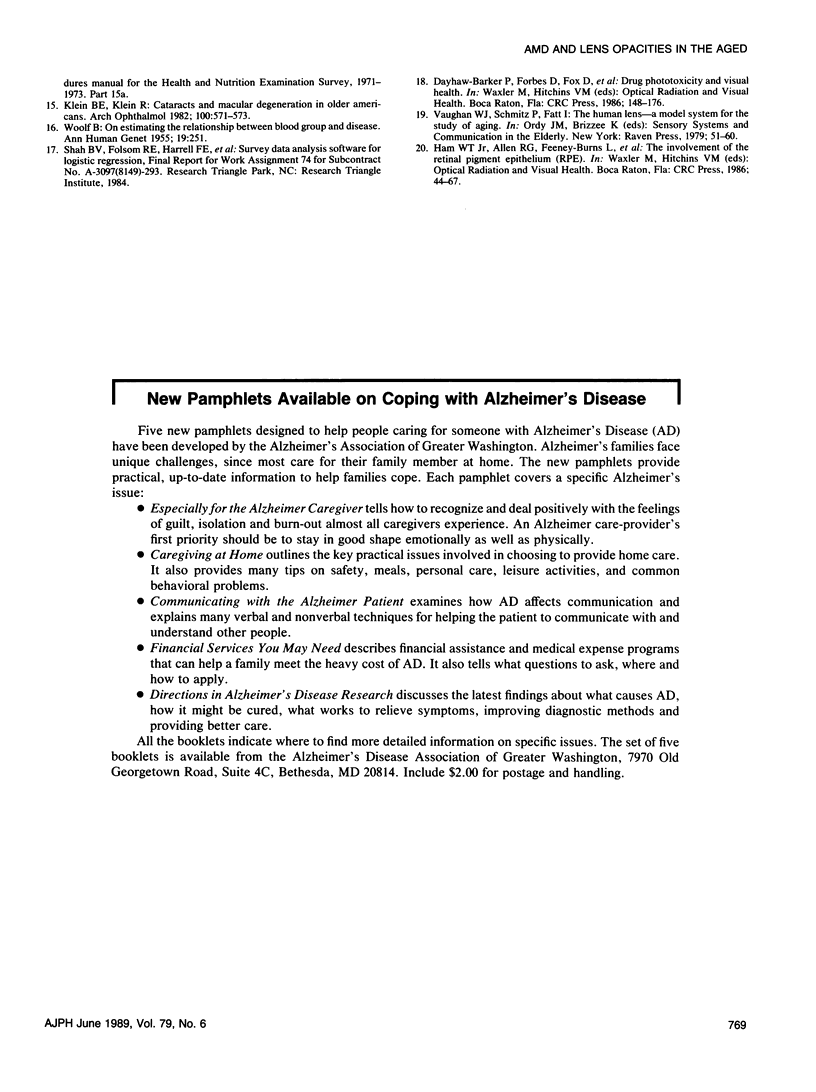
Selected References
These references are in PubMed. This may not be the complete list of references from this article.
- Bhuyan K. C., Bhuyan D. K. Molecular mechanism of cataractogenesis: III. Toxic metabolites of oxygen as initiators of lipid peroxidation and cataract. Curr Eye Res. 1984 Jan;3(1):67–81. doi: 10.3109/02713688408997188. [DOI] [PubMed] [Google Scholar]
- Collier R., Zigman S. The gray squirrel lens protects the retina from near-UV radiation damage. Prog Clin Biol Res. 1987;247:571–585. [PubMed] [Google Scholar]
- Ferris F. L., 3rd Senile macular degeneration: review of epidemiologic features. Am J Epidemiol. 1983 Aug;118(2):132–151. doi: 10.1093/oxfordjournals.aje.a113624. [DOI] [PubMed] [Google Scholar]
- Ham W. T., Jr, Mueller H. A., Ruffolo J. J., Jr, Guerry D., 3rd, Guerry R. K. Action spectrum for retinal injury from near-ultraviolet radiation in the aphakic monkey. Am J Ophthalmol. 1982 Mar;93(3):299–306. doi: 10.1016/0002-9394(82)90529-3. [DOI] [PubMed] [Google Scholar]
- Ham W. T., Jr, Mueller H. A., Ruffolo J. J., Jr, Millen J. E., Cleary S. F., Guerry R. K., Guerry D., 3rd Basic mechanisms underlying the production of photochemical lesions in the mammalian retina. Curr Eye Res. 1984 Jan;3(1):165–174. doi: 10.3109/02713688408997198. [DOI] [PubMed] [Google Scholar]
- Klein B. E., Klein R. Cataracts and macular degeneration in older Americans. Arch Ophthalmol. 1982 Apr;100(4):571–573. doi: 10.1001/archopht.1982.01030030573002. [DOI] [PubMed] [Google Scholar]
- Sperduto R. D., Hiller R., Seigel D. Lens opacities and senile maculopathy. Arch Ophthalmol. 1981 Jun;99(6):1004–1008. doi: 10.1001/archopht.1981.03930011004003. [DOI] [PubMed] [Google Scholar]
- Sperduto R. D., Seigel D. Senile lens and senile macular changes in a population-based sample. Am J Ophthalmol. 1980 Jul;90(1):86–91. doi: 10.1016/s0002-9394(14)75081-0. [DOI] [PubMed] [Google Scholar]
- Varma S. D., Chand D., Sharma Y. R., Kuck J. F., Jr, Richards R. D. Oxidative stress on lens and cataract formation: role of light and oxygen. Curr Eye Res. 1984 Jan;3(1):35–57. doi: 10.3109/02713688408997186. [DOI] [PubMed] [Google Scholar]
- WOOLF B. On estimating the relation between blood group and disease. Ann Hum Genet. 1955 Jun;19(4):251–253. doi: 10.1111/j.1469-1809.1955.tb01348.x. [DOI] [PubMed] [Google Scholar]
- Zigman S., Vaughan T. Near-ultraviolet light effects on the lenses and retinas of mice. Invest Ophthalmol. 1974 Jun;13(6):462–465. [PubMed] [Google Scholar]


